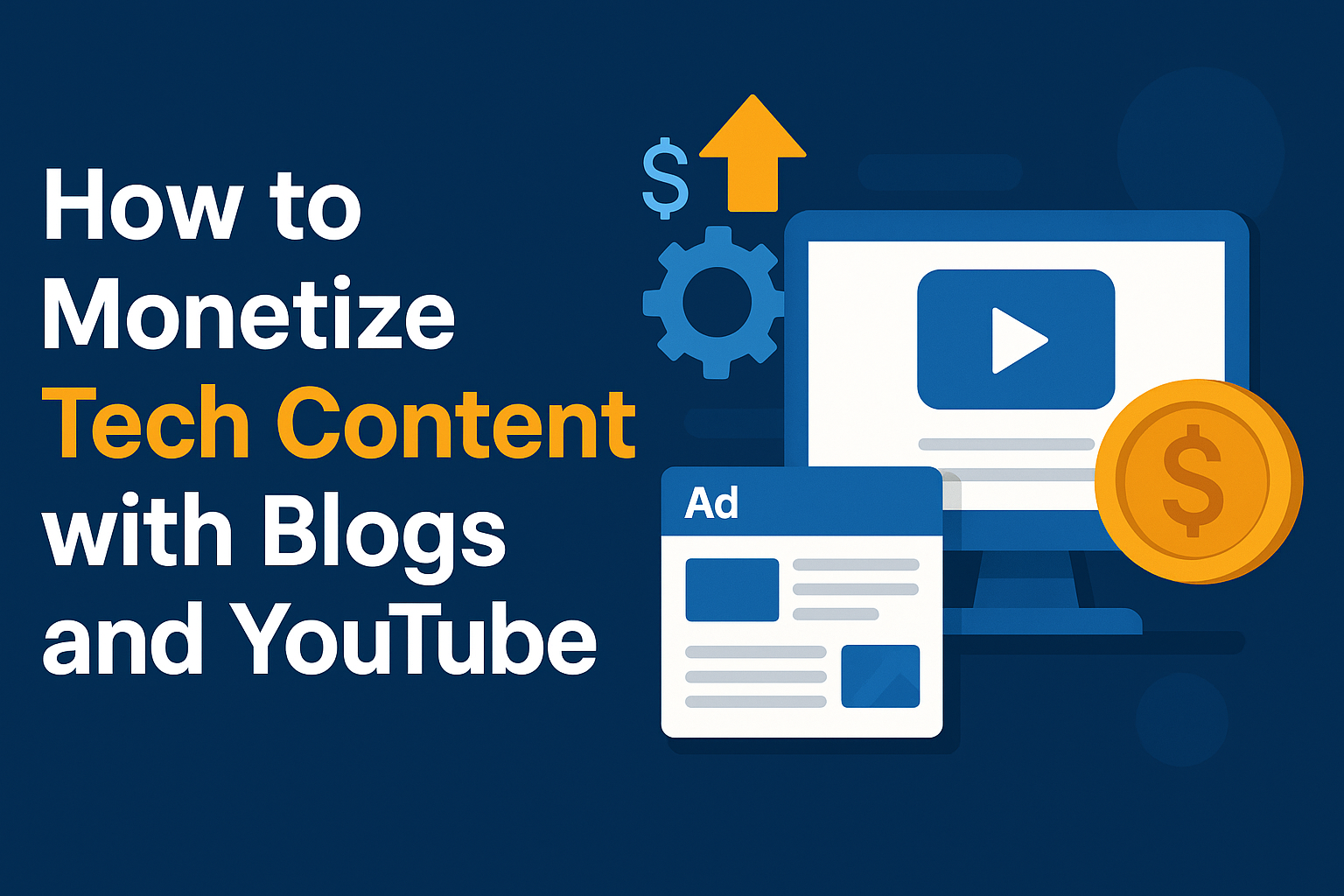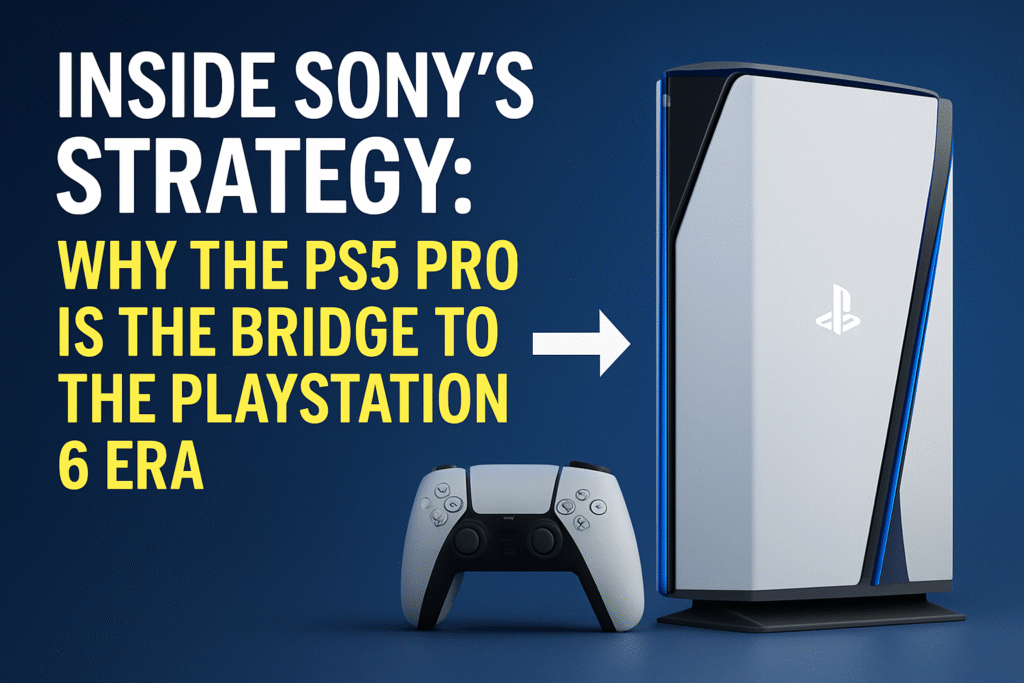
In the digital age, tech content is among the most profitable and evergreen niches on the internet. Whether you’re passionate about gadgets, software reviews, programming tutorials, or the latest AI breakthroughs, there are significant opportunities to turn your content into a reliable income stream through blogs and YouTube. In this guide, we’ll explore step-by-step strategies, monetization platforms, and tools to help you turn your tech content into cash in 2025.
Why Tech Content Is So Lucrative
The technology niche has three major advantages when it comes to monetization:
- High-paying advertisers: Tech-related content attracts premium CPC (Cost Per Click) rates, especially through Google AdSense and affiliate links.
- Evergreen value: Quality tutorials, reviews, and explainers remain relevant for months or even years.
- Multiple audiences: From developers and engineers to casual gadget lovers, tech content can be tailored to different segments.
Step 1: Choose a Focused Tech Niche
Before creating content, identify your niche within the tech ecosystem. Niches that perform well in 2025 include:
- AI tools & generative AI platforms
- Smartphone & gadget reviews
- Smart home tech
- Cybersecurity tips
- Programming tutorials (Python, JavaScript, etc.)
- Cloud & serverless architecture
- SaaS product reviews
- Tech news & breakdowns
Tip: The more specific your niche, the easier it is to build authority and attract loyal readers/viewers.
Step 2: Monetizing a Tech Blog
Blogging remains a powerful tool for passive income. Here’s how to make your tech blog earn:
1. Google AdSense
Once your blog gets consistent traffic (ideally 1,000+ monthly visitors), you can apply for AdSense. Tech blogs often receive high CPCs (up to $1–$3 per click or more).
Requirements for AdSense approval:
- At least 15–20 SEO-optimized articles
- About, Privacy Policy, and Contact pages
- Mobile-friendly and fast-loading site
- No plagiarized content
2. Affiliate Marketing
Tech content aligns perfectly with affiliate marketing. You can promote:
- Amazon (tech gadgets, laptops, accessories)
- Software tools (VPNs, hosting, SaaS)
- Online courses or cloud platforms (e.g., Udemy, Coursera, AWS)
Example: Reviewing the latest MacBook and including affiliate links to Amazon or Best Buy.
3. Sponsored Posts
Once your blog gains traction, tech brands may pay you to publish sponsored articles, typically ranging from $50 to $1,000+ depending on your traffic and domain authority.
4. Digital Products & Courses
If you’re a developer or IT expert, consider selling:
- E-books (e.g., “Mastering Python in 30 Days”)
- Online courses
- Templates or scripts
Step 3: Monetizing a Tech YouTube Channel
With over 2.5 billion monthly users in 2025, YouTube is the go-to platform for visual tech content.
1. YouTube Partner Program (Ad Revenue)
To qualify, you need:
- 1,000 subscribers
- 4,000 watch hours in the past 12 months (or 10M Shorts views)
- Ad-friendly, original content
Estimated earnings: $2–$7 per 1,000 views (higher for tech content).
2. Affiliate Marketing via YouTube
Use your video descriptions to add affiliate links. Product review videos (smartphones, gaming gear, AI software) perform best for this.
3. Sponsorships & Product Reviews
As your channel grows, tech companies may reach out for paid collaborations. For instance, you can:
- Review or unbox new devices
- Compare software tools
- Provide feedback on beta apps
Rates vary from $100 to $10,000 per video, depending on views and niche authority.
4. Merch & Digital Sales
Consider offering custom tech-themed merchandise, PDF guides, or digital toolkits for developers and IT professionals.
Step 4: Create Content That Ranks and Converts
For Blogs:
- Use SEO tools (like Yoast, RankMath, or SurferSEO)
- Perform keyword research using tools like Ahrefs or Ubersuggest
- Structure your content: headings, internal links, images
- Add call-to-actions (CTAs) for affiliate links
For YouTube:
- Write compelling titles with keywords
- Use thumbnails with text overlays and human faces
- Include CTAs in your video (subscribe, like, visit your blog)
- Add timestamps and SEO-friendly descriptions
Step 5: Cross-Promote for Maximum Reach
Combine both platforms for maximum synergy:
- Add your YouTube videos to your blog posts
- Use your blog to expand on your video content
- Build a newsletter to drive traffic to both
- Share your content on Reddit, LinkedIn, X (Twitter), and Facebook tech groups
This multiplatform approach builds trust, authority, and recurring traffic—which leads to higher monetization potential.
Tools That Make Monetization Easier
| Tool | Use |
| Google Analytics | Track visitor behavior on your blog |
| TubeBuddy / VidIQ | Optimize YouTube SEO |
| Canva | Design thumbnails, blog visuals |
| ConvertKit / Mailchimp | Build and monetize an email list |
| ShareASale / Impact / Amazon Associates | Find affiliate programs |
| WordPress + Astra + Elementor | Easy blog design and optimization |
Realistic Timeline to Start Earning
| Month | Goal |
| Month 1 | Set up blog & channel, post 5–10 articles/videos |
| Month 2 | Apply for AdSense and affiliate programs |
| Month 3–4 | Build content consistently, optimize SEO |
| Month 5–6 | Start getting traffic, test monetization strategies |
| Month 6+ | Earn from ads, affiliates, and potential sponsors |
Conclusion: Start Today and Scale Smart
Monetizing tech content in 2025 is more accessible than ever—but it requires consistency, SEO, and value-driven content. Focus on your niche, provide solutions, and leverage both blogs and YouTube to reach different types of audiences.
With the right strategy, tools, and persistence, your tech passion can become a sustainable online business.





